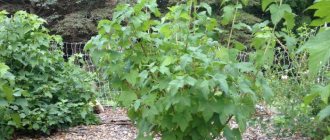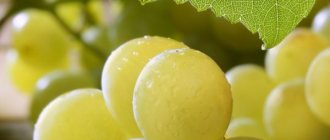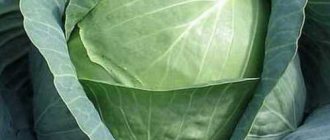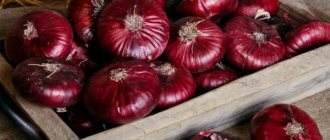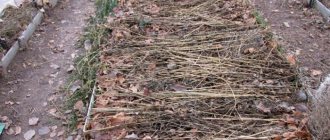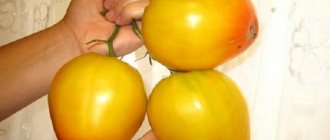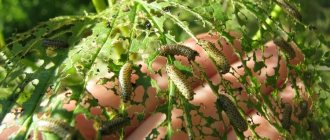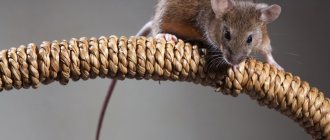general information
Armenian cucumber is also called snake melon. The fruits are up to 50 centimeters long and weigh up to 1 kilogram. They are slightly sweet and juicy to taste. The plant belongs to the Cucumber genus and the Pumpkin family. The fruits have alternating stripes of white and green. Ripe fruits have a taste reminiscent of melon.
The length of the shoots of the Armenian cucumber sometimes reaches 4 meters. The leaves are bright green, similar in shape to melons. The skin of the fruit is slightly pubescent. A characteristic feature of such fruits is that there are practically no voids in the juicy, dense pulp. The seeds of the Armenian cucumber are small.
The culture is early ripening. Ripening time is 70-80 days. One plant can produce up to 10 kg of fruit. The Armenian cucumber is harvested until frost. This plant is grown both in greenhouses and in open ground. A special feature of this variety is its high resistance to disease and resistance to sudden temperature changes.
Application
Cucumber is most often eaten fresh, especially young fruits. When cucumbers reach maturity, they are often prepared: canned, fried, stewed. The skin is not removed, since the plant is quite watery. For pickling and preservation, the cucumber is divided into parts, because its large dimensions do not allow it to be packed entirely into any one jar.
Despite the obvious aroma of melon, the marinade for such cucumbers is usually salty. This is a normal practice for hot countries: there they even eat watermelons in a salted, canned form. Young fruits are eaten fresh as a snack or made into a salad with tomatoes and herbs, sour cream, added as a filling to flatbreads, and used as a side dish for meat dishes.
Useful properties of the plant
Armenian cucumber has beneficial properties:
- Its use is beneficial for brain function. Armenian cucumber contains the flavonoid fisetin. Scientists have found that it strengthens human memory and intelligence.
- Polyphenols (also called lignins) are an effective preventive agent that prevents the development of ovarian, prostate and breast cancer. It also contains phytonutrients - substances that have an anti-cancer effect.
- The fruits are rich in antioxidants as well as flavonoids. Examples include kaempferol, luteolin, apigenin and vitamin C. These substances provide great benefits to the human body. For example, kaempferol helps reduce the risk of cardiovascular diseases.
- B vitamins contained in fruits help reduce anxiety. They are useful for those who have experienced the destructive effects of stress.
See also
Description of the cucumber variety Swallow F1, cultivation and care rules
Read
Subtleties of collecting cucumber seeds: proper preparation and storage
Growing seeds is normal. In order for the seeds to sprout quickly and quickly, the soil must be light and fertile. Before sowing, the seeds need to be soaked in warm water for several hours and then immediately planted in the ground. Disinfection should not be carried out - the seeds of the Armenian cucumber do not have an outer shell. The first shoots should appear within a week.
If you decide to plant in seedlings, the most optimal time would be mid-end of April. Seeds are planted at a depth of 4–5 centimeters to make it easier for side shoots to grow. The first time after sowing, the seeds should be watered as needed.
First of all, please note that not all cucumbers are suitable for harvesting seeds. After all, a competent choice of fruits is half the success
Before choosing a cucumber from which to collect seeds, make sure that it is not a hybrid. Crops designated F1, F2 are hybrids that are characterized by resistance to dry weather, good yield, and early ripening.
But their seeds will not produce the same fruit next year, so they are unsuitable for harvesting.
Regular varietal seeds acquire their properties through years of crossbreeding and preparation, resulting in a plant with stable characteristics.
On the most vigorous plant, leave several large fruits until autumn so that they are fully ripe and turn light brown or yellow. To avoid accidentally picking them, tie a ribbon at the base of the fruit and place a wooden plank under it. Then, during prolonged autumn rains, your seed cucumber will not rot.
When the stalk dries and the fruit softens, remove it from the vine. Then cut in half lengthwise and remove the back part: cut off 2-3 cm of the fruit and discard, as the seeds from this zone produce unpalatable and bitter fruit.
Remove the seeds from the seed chamber and place in a glass container. Fill the container 2/3 full with water and leave for two days in a warm place. After this time, pour water to the top and stir. This is necessary so that the light (empty) seeds float and the amniotic membrane separates. If it remains on the seed, it will inhibit germination.
You can use the seed hardening method: seed cucumbers are picked only after frost. This stratification contributes to a good harvest.
Drain the water along with the floating seeds, and rinse the remaining seeds at the bottom several times with running water. Place the clean seeds on newspaper and stir them periodically to dry evenly.
To speed up the drying process, do not heat the seeds near heat sources.
It is important to provide them with a natural flow of air and light
Cucumber seeds can be stored for up to 6 years. Using these tips, you can enjoy the taste of the fruits of your favorite variety next year.
Growing technology
Seeds for planting are taken from fully ripened fruits. Germination is maintained for 5 years.
Choice of time and place
When grown from seeds, seedlings are planted in open ground in mid-April. The Armenian cucumber is undemanding in terms of soil quality. Therefore, almost any area can be used for cultivation.
Preparation of planting material
In order for the harvest to be good, it is recommended to grow seedlings from seeds and then plant them in open ground.
To do this, the seeds are planted in cassettes or peat pots in mid-April.
Planting process
The depth of planting seedlings should be 4-5 centimeters. The distance between plants should not be less than 1 meter. Compliance with this requirement is very important, since the stems of the plant are long and can interfere with each other.
Reviews from gardeners
“I am an experimental gardener, so all new cucumbers always appear in my garden. The Armenian cucumber “Bogatyr”, a photo of which I saw on the Internet, was no exception. I became very interested in this exotic plant, so I began to look for information about it. I read the characteristics of the variety, reviews, and firmly decided that this miracle vegetable should settle in my beds. No sooner said than done. I ordered seeds and planted them in the ground in early spring. They rose together and very quickly. I cared for them like ordinary cucumbers and soon received the first fruits. The taste is unusual - either melon or cucumber, but my family really liked it. All summer we ate delicious salads from young cucumbers, and the big ones were put into canning. I will definitely plant it next year, and I recommend everyone to try it.” Svetlana, 48 years old.
General rules of care
It is necessary to carry out weeding and loosening regularly.
How to fertilize
Although the composition of the soil for the Armenian cucumber is not significant, regular feeding is very important for it. If it is not there, the yield will decrease. In order to provide basic nutrition for this plant, it is enough to water it with diluted slurry once every two weeks.
Additional fertilizing:
- A mixture of equal parts of ammonium nitrate, superphosphate and potassium salt is added to the soil when planting Armenian cucumber.
- When flowering occurs, add a mixture of equal parts of urea, potassium sulfate, superphosphate - 3 tablespoons diluted in a bucket of water.
- Periodic watering with infusion of ash and mullein will be useful.
All these subcortex will provide adequate nutrition for the plant.
How to water correctly
Armenian cucumber likes the soil to be well moistened. To do this, it needs to be watered daily. It must be remembered that only warm water can be used for this purpose, and splashes should not come into contact with the leaves. Watering should be directed to the ground next to the plant. For 1 square meter you need 4-5 liters of water. When the fruits begin to form, this volume will need to be doubled.
See also
Treatment of fusarium wilt of cucumbers with folk remedies and drugs
Read
To prevent waterlogging with such frequent watering, the soil must be loosened regularly.
How to grow Armenian cucumber
Despite its unusualness and novelty, the culture has no special requirements. The basic rules for planting and care are similar to any other plants. Whether you grow snake melon outdoors or in a greenhouse, the results will be approximately the same. A greenhouse has one advantage: a more uniform climate and the ability to regulate it. Since the plant came to us from warm countries, the temperature for growing should be comfortable.
Snake melon can be grown indoors or outdoors. Unlike conventional varieties, too high humidity is not needed: it will more likely harm the plants than benefit them. The fruits are removed from the bushes along with the tail, otherwise they will not be stored well and will spoil faster.
Interesting!
If you store ripe fruits in the refrigerator, they will retain their taste and aroma for a month after picking.
Seeds
Serpentine melon seeds do not have fruit membranes, so a fermentation process occurs. When removing seeds from fruits, rinse with clean water and dry. Before planting, you can store them in a cool place in paper packaging, tightly closed. There is no need to disinfect, otherwise the solution may damage the structure without the shell. You need to germinate seeds in the same way as regular cucumber seeds. It is best to plant seedlings rather than in the ground: this way you will avoid risks of frost and ensure sustainable growth of seedlings.
The optimal time for planting seeds for seedlings is the second half of April. The seeds need to be buried deeper, at a distance of about 5 centimeters. Water as needed and make sure the plants get enough light. The first shoots will appear in a week.
Interesting!
You can speed up the germination process by treating the seeds in a growth stimulator for several days. After this, seedlings will appear faster by a couple of days.
Landing in the ground
You can move the seedlings to the mainland after the fourth pair of leaves appears. You can plant them in closed ground or under film in the second half of May, but with open ground you need to focus on the weather. The air temperature should be about 25°C, and the soil should be warmed up to 15°C. It is better to place up to 4 bushes on each square so that the plants feel spacious.
Interesting!
Crop rotation is a must, which also applies to snake melon. You cannot grow plants in the same bed for more than four years. Try to renew the soil and move crops around the garden, alternating with other crops.
The soil must be prepared first. Clear of plant residues, fertilize with minerals so that the cucumbers have something to eat. Superphosphate and organic matter are suitable. If you grow a plant in a greenhouse, be sure to treat all surfaces, walls and crossbars with a disinfectant composition: fungus can accumulate on them. Light and fertile soil is suitable for cultivation. Before planting the serpentine melon, it is recommended to fertilize it with humus and mix it with sand, adding half a kilogram to each square.
Caring for Armenian cucumbers
The plants are unpretentious: the same care as for cucumbers or melons is suitable for them. The only major difference: humidity. Snake melon is accustomed to a dry climate, so it is better to control this indicator; it should not exceed 50%. This variety grows best in dry, warm climates.
You need to water the plants with warm water so as not to chill the roots and damage them. It is best to water in the evening, right at the root. In the sun, moisture evaporates faster and watering is ineffective. Excessive watering is harmful, as is lack of moisture. Make sure the soil is moist but not wet. When the first signs of wilting, yellowing leaves or brown spots appear, indicating a lack of nutrients, add complementary foods to the watering. Moisture is needed regularly, so if it is not possible to take care of the plants several times a week, organize automatic watering or mulch the soil. Mulching will help increase the nutritional value of the soil, so on mineral-poor soil this method becomes especially relevant.
Interesting!
Cucumbers can be planted in heated greenhouses much earlier. If you can maintain the indoor heat level above 25°C, plant without fear.
If you planted an Armenian cucumber in the ground, and immediately after that frost hit, cover the crops with film. This will help keep you warm. An alternative is mulching with organic or inorganic material. Monitor soil moisture: if there is no access to air, the process of rotting and the development of harmful microorganisms may begin. Regularly clear the beds of weeds and debris so that the plants can develop peacefully.
You may be interested in:
Fighting spider mites in a greenhouse on cucumbers If you are interested in the question of how to get rid of spider mites on cucumbers in a greenhouse, you should familiarize yourself with folk...Read more...
Loosening is a mandatory part of the care program. It improves aeration, giving the roots access to air, and at the same time makes the soil more homogeneous, evenly moistening the layers and distributing micronutrients. Feeding requires sufficient amounts of nitrogen, potassium and phosphorus. The first mineral is responsible for the rapid growth of the green part, potassium and phosphorus help the fruits to form and saturate them, improving the taste and making them more juicy. Complementary feeding should be done once every 10-14 days. Moisten the soil well before applying fertilizer.
Treatment against diseases and pests
If there is a Colorado potato beetle in the plantings. In this case, it is recommended to treat the plant with insecticides Aktara, Tabu or Regent.
It is necessary to regularly ventilate and loosen the soil. In this case, the likelihood of fungal infection or root rot is reduced.
If slugs appear on the underside of the leaves, a solution of red pepper or ash will help fight them. To detect pests in time, you need to regularly inspect the leaves of the plant on both sides. The use of Fofatox is effective against Medvedka.
general description
Armenian cucumbers are sometimes called silver or snake melon. The variety appeared in central Russia relatively recently, although the history of their cultivation goes back many centuries.
It is believed that at first no one was involved in its selection and the plant appeared as a result of natural crossing of pumpkin and cucumber crops. Hence its original appearance.
Main varietal characteristics
The Armenian cucumber is characterized by:
- large fruit sizes;
- powerful root system;
- long lashes with a large number of ovaries;
- short growing season;
- lack of bitter taste in the skin;
- cucumber flavor with a slight sweetish undertone:
- melon aroma;
- high resistance to pests and fungal infections.
The abundance of the harvest and a long fruiting period are also characteristic qualities of the hybrid.
Appearance of fruits
The color of the fruit depends on the variety and degree of ripening: it ranges from rich green to almost white with a silvery tint.
The surface is slightly ribbed, the peel is thin, it becomes coarser as the cucumber grows.
The root system is sensitive to transplants because it has multiple fine root hairs that provide nutrition to the plant.
The peculiarity of the structure of the fruit is the absence of an internal cavity, the pulp is dense, the seeds are located in the middle.
Beneficial features
Silver melon has taken the most striking properties of both cultures, therefore it has a powerful diuretic effect and is able to normalize intestinal motility, preventing stagnation and excessive gas formation.
The fruits are rich in vitamins, micro and macroelements, which stimulate brain function, concentration, improve memory, stabilize heart function, and increase vascular elasticity.
Like the classic cucumber, the fruit consists of almost 80% water, so it has a very low calorie content and is perfect for dietary nutrition and is included in the menu of weight control programs.
Productivity
The number of ovaries and the size of the fruit depends on compliance with agricultural technology.
You can get a good harvest from the bush
The first fruits appear 70-80 days after planting, and fruiting continues until mid-September, until the temperature drops to 14°, so the volume of harvest from one bush is impressive.
Area of application of fruits
Armenian cucumber is consumed fresh. For this purpose, they choose the so-called greens - young fruits of small size. They ideally exhibit their taste in salads and chopped vegetables.
Pickled fruits acquire an interesting taste, and you can experiment and add cloves, lemon or hot pepper to the classic cucumber marinade. The result will be several unique dishes that will become the pride of any housewife.
Overripe fruits have skin that becomes hard and unsuitable for food. Such fruits are peeled and used for stewing in vegetable stews, and added to zucchini caviar.
Resistance to diseases and pests
Initially, plants have high resistance to fungal infections. But this is in established dry, hot weather.
In the conditions of central Russia, there are often rainy summers, when the soil is oversaturated with moisture, constant evaporation occurs and ideal conditions are created for the proliferation of harmful fungi and bacteria.
The first signs of powdery mildew and spotting are changes in leaf color. In order to cope with the disease, the affected castings are removed, the rest are treated with Skor, Oksikhom, Fitosporit, Cumulus.
If the crop is grown in a greenhouse, then for preventive purposes, regular ventilation and loosening of the soil is carried out to prevent diseases and root rotting.
Not a single plant is immune from pests, and if there is a Colorado potato beetle in the area, it will definitely get to the silver melon. Spraying with Regent, Tabu, Aktara will save you from it.
Slugs love moisture and often settle on the underside of leaves. To detect them in time, it is recommended to regularly inspect the lashes. Solutions of red pepper, ash and dusting with tobacco dust will help in the fight against them. To prevent the sprayed solution from rolling off the leaves, liquid soap is added to it.
The mole cricket causes great harm, gnawing the roots and literally destroying the plant. It is recommended to use Fofatox. Fufanon, a lime solution, is effective for treating aphids.
Landing conditions
When it comes to planting seeds or seedlings in open ground or a greenhouse, the first thing to do is take care of the soil.
The Armenian hybrid prefers soil with a significant amount of humus and ash. Additional fertilizers in the form of phosphates and low salinity will not be superfluous - cucumbers take this calmly, the yield does not fall. For planting in greenhouses, it is necessary to install good supports. And the beds themselves have the following parameters:
- 100 cm wide;
- 150 cm in length;
- 25 in height.
The planting depth should not exceed 4-5 cm, and the distance between the bushes themselves should vary around 1 meter, since the plants themselves are quite large and can interfere with the normal growth of their neighbors.
Before starting the first sowing, it is advisable to disinfect each of the purchased bags with Armenian cucumber seeds, treat them in warm water, leaving them there for a day. The best time for seedlings will be mid to late April. The prepared seeds are planted in peat pots or cassettes with fertilized soil to a depth of 4-5 cm and covered. You can put 2-3 seeds in a pot at a time. Afterwards only one, the strongest plant is left.
It is advisable to place the seedlings in a well-lit place - window sills on the sunny side. The optimal temperature for good growth of cucumbers will be 23-25 degrees. It is a good idea to avoid excessive humidity.
This must be done very carefully and carefully, since the root system cannot be damaged. It is necessary to plant in the ground with the earthen lump itself, for the first few hours small bushes of cucumbers should be shaded
If you give preference to planting seeds, then:
- the first step is to soak the entire contents of the bag in water for a while, and only after that plant it in the ground;
- This should be done after the frosts have passed, sudden cold snaps - in the middle or end of May;
- the temperature should not fall below 14 degrees.
Several seeds are placed in generously watered, fertilized holes, and they are also poured to a depth of 5 cm. The first sprouts will appear within 1 week.
Armenian cucumbers need care. This is systematic digging up of the soil for better air exchange, ventilation of the root system, removal of weeds to additionally free up space for the necessary seedlings, and rare but plentiful watering.
Vegetables love fertilized soil and additional nutrients from outside, so fertilizing is indispensable. Organic substances will do. But during the period of active growth of the bush, organic matter should definitely be mixed with a complex of mineral substances. Preference should be given to phosphorus, potassium and nitrogen fertilizers:
- nitrogen is used for the formation of the bush and further fruiting, and high yield;
- potassium and phosphorus - proper weight gain and taste characteristics for Armenian vegetables.
The attached list includes the following types of additives:
- a mixture of equal parts of potassium salt, ammonium nitrate and superphosphate;
- a solution of urea, potassium sulfate and superphosphate (sulfate in a ratio of 1 teaspoon per 1 bucket of water);
- mullein tinctures with the addition of ash;
- additional tincture of mullein with chicken droppings;
- slurry.
Watering is advisable once a day and exclusively with heated water. Cold weather can negatively affect the absorption of moisture by the root system of the plant and affect fruiting. It is necessary to avoid the penetration of water onto the leaves and stems themselves, especially during the daytime. There is a risk of getting burns on the thin peel of cucumbers.
Silver melon does not require pinching or tying up lashes and whiskers. It is advisable not to allow the fruits to overripe, otherwise cucumbers that are too large may lose the charm of the tenderness of their thin skin and pulp. They begin to cut the fruits at the growth stage of 20-30 cm. The general collection is carried out at least once a day, more is possible. It is preferable to pick the fruits together with the stalks, this will increase the shelf life.
Typically, cucumbers of this variety do not lose their quality for 30 days. To continue this gap, refrigerators and cool places will also work.
